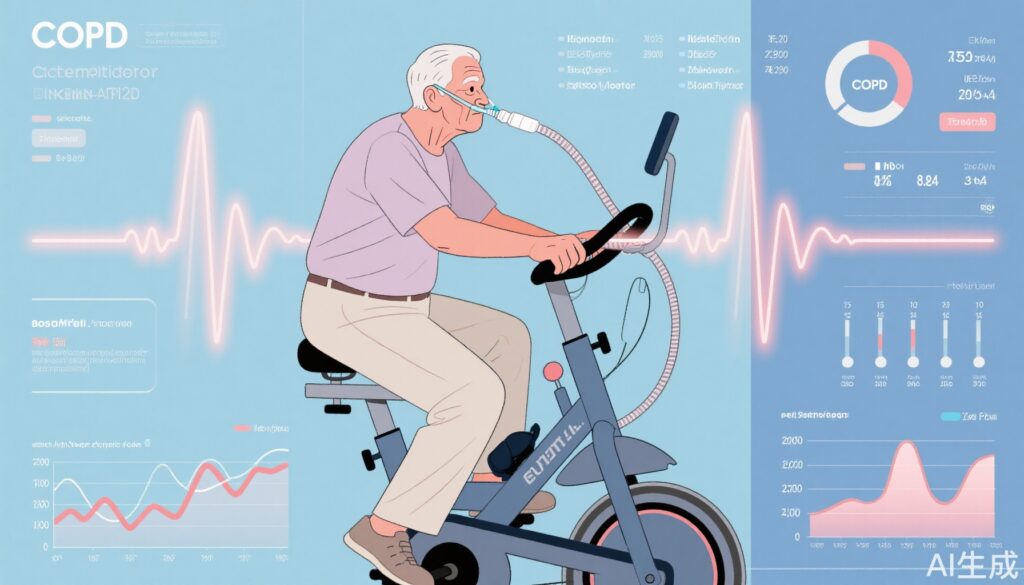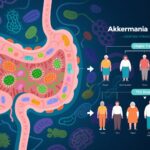Highlights
- Nasal high flow (NHF) therapy during exercise in COPD modestly increases tidal volume (Vt) and reduces dyspnoea at submaximal exertion.
- NHF has negligible impact on dynamic respiratory muscle workload (PTPdi/min) and only a trivial improvement in endurance capacity.
- NHF may be most beneficial for patients with severe inspiratory constraints and pronounced dyspnoea during exercise.
Study Background and Disease Burden
Chronic obstructive pulmonary disease (COPD) is a progressive respiratory disorder characterized by airflow limitation, hyperinflation, and significant exercise intolerance. Dyspnoea and muscle fatigue are principal contributors to reduced physical activity and diminished quality of life in COPD patients. Pulmonary rehabilitation and oxygen supplementation are mainstays of therapy, but many patients remain limited by persistent symptoms during exertion. Nasal high flow (NHF) therapy, delivering heated and humidified air/oxygen at high flow rates, has emerged as a potential adjunct to support ventilatory demand, enhance gas exchange, and reduce the work of breathing. However, its mechanistic impact during exercise in severe COPD remains incompletely understood.
Study Design
Bonnevie et al. conducted a randomized, single-blind, crossover trial (Pulmonology. 2025 Dec 31;31(1):2424649) to elucidate the physiological effects of NHF during exercise in COPD patients. Fourteen participants with severe airflow obstruction (median FEV1 40%, IQR 28–52%) and a median age of 70 years (IQR 57–72) were enrolled. Each patient performed two constant workload exercise tests on a cycle ergometer at 75% of peak power, one with NHF (30 L/min, 34°C) and the other under control conditions (ambient air or standard oxygen as per protocol). The primary physiological endpoint was the pressure-time product of transdiaphragmatic pressure per minute (PTPdi/min), a marker of dynamic respiratory muscle effort. Secondary endpoints included tidal volume (Vt), endurance time, dyspnoea, and lower limb fatigue (10-Borg scale). All physiological parameters were continuously monitored at isotime (i.e., at the same time point during each test).
Key Findings
At isotime, NHF therapy produced a statistically significant increase in tidal volume (mean difference [MD] 77 mL, 95% CI 21 to 133 mL) compared to the control intervention. However, NHF had little to no effect on dynamic respiratory muscle workload as measured by PTPdi/min (MD -15 cmH2O·s/min, 95% CI -62 to 33).
NHF modestly improved exercise endurance time (MD 20 seconds, 95% CI 2 to 40), though the absolute increase was small and likely of limited functional consequence in this population. Importantly, NHF was associated with a clinically meaningful reduction in perceived dyspnoea at isotime (MD -1.1 on the Borg scale, 95% CI -2.1 to -0.1). Effects on lower limb fatigue and other cardiorespiratory parameters were uncertain or negligible.
Safety outcomes were not explicitly detailed, but the study reported no adverse events related to NHF use during exercise sessions.
| Outcome Measure | NHF vs. Control (Mean Difference, 95% CI) | Interpretation |
|---|---|---|
| PTPdi/min | -15 cmH2O·s/min (-62 to 33) | No significant effect |
| Tidal Volume (Vt) | +77 mL (21 to 133) | Significant increase |
| Endurance Capacity | +20 s (2 to 40) | Trivial improvement |
| Dyspnoea (Borg scale) | -1.1 (-2.1 to -0.1) | Clinically meaningful improvement |
| Lower Limb Fatigue | Uncertain | No clear effect |
Expert Commentary
The findings from Bonnevie et al. offer nuanced insight into the role of NHF during exertional stress in severe COPD. While the lack of effect on PTPdi/min suggests that NHF does not substantially unload the respiratory muscles during high-intensity exercise, the observed increase in tidal volume and reduction in dyspnoea are noteworthy. The improvement in subjective breathlessness—though modest—may be particularly relevant for patients experiencing critical inspiratory constraints or those who are highly symptomatic despite standard therapy.
This study’s crossover design strengthens its internal validity, minimizing inter-individual variability. However, the sample size was small (n=14), limiting statistical power and generalizability. Furthermore, the clinical significance of a 20-second increase in endurance is debatable, but the reduction in dyspnoea may enhance the patient experience, adherence to rehabilitation, or willingness to engage in activity.
Mechanistically, NHF may ameliorate inspiratory loading by providing a small degree of positive airway pressure, humidification, and reduction of dead space ventilation. Previous work has demonstrated similar trends for NHF in stable and post-acute COPD, but evidence during exertion is sparse (Pisani L et al., Respir Care. 2020;65(4):529-541).
Guidelines on NHF use in exercise for COPD remain undeveloped. These findings support a potential role for NHF as an adjunct in highly symptomatic individuals, albeit with recognition of its limitations in altering fundamental respiratory mechanics during exertion.
Conclusion
NHF therapy during exercise in severe COPD patients modestly enhances tidal volume and perceptibly reduces dyspnoea, with little impact on respiratory muscle workload or endurance. The clinical value may be greatest in those with critical inspiratory constraints and significant breathlessness. Future research should focus on identifying responder profiles, optimizing flow rates, and integrating NHF into comprehensive pulmonary rehabilitation strategies.
References
1. Bonnevie T, Gravier FE, Smondack P, et al. Physiological effects of nasal high flow therapy during exercise in patients with chronic obstructive pulmonary disease: A crossover randomised controlled trial. Pulmonology. 2025 Dec 31;31(1):2424649. doi: 10.1080/25310429.2024.2424649.
2. Pisani L, Vega ML, Use of Nasal High Flow in Stable COPD: Rationale, Mechanisms, and Possible Clinical Applications. Respir Care. 2020;65(4):529-541.


